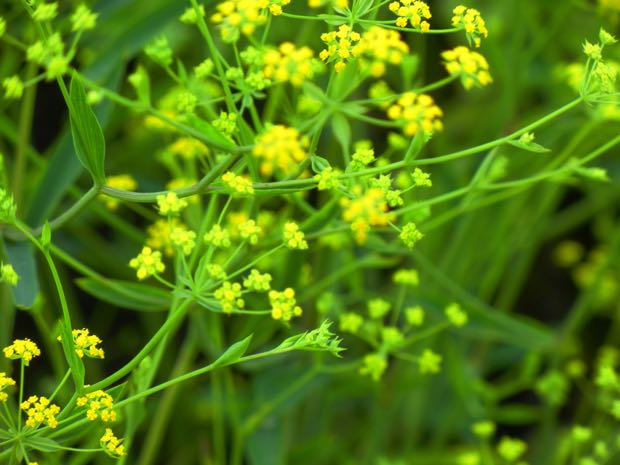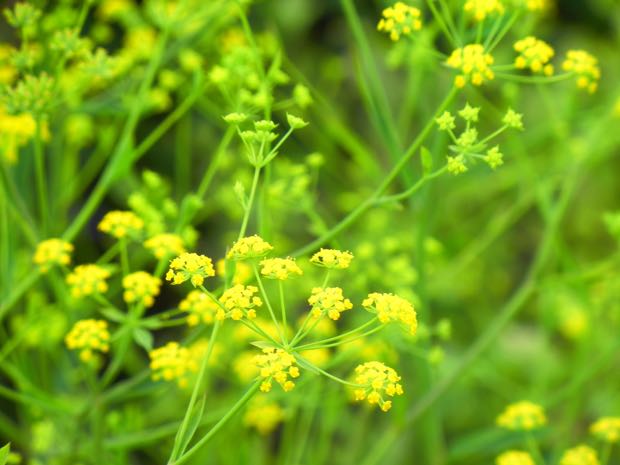Taenidia integerrima: Embracing the Beauty of Yellow Pimpernel
Background and Characteristics: Taenidia integerrima, commonly known as Yellow Pimpernel, is a herbaceous perennial that belongs to the Apiaceae family of plants. This delightful species is closely related to parsley and is native to woodlands in North America. Notably, Taenidia integerrima is classified as endangered in the northwest regions of the United States. Beyond its ecological significance, this plant holds historical value, as Native Americans, particularly the Mamaceqtaw, utilized it for medicinal purposes, primarily for treating pulmonary ailments.
Description and Habitat: Growing to a height of 1 to 3 ft (30 to 90 cm), Taenidia integerrima boasts doubly compound foliage when matured, transitioning to a singly compound arrangement when young. The upper stems bear compound umbels consisting of numerous small yellow flowers. Individually, the flowers measure approximately 1/8″ (3 mm) in size. These delicate yellow blossoms add a touch of brightness and charm to their natural surroundings.
Taenidia integerrima thrives in woodlands and is well-adapted to specific habitat conditions, contributing to its status as an endangered species in certain regions. Its resilience in such environments further emphasizes the importance of preserving and cultivating this remarkable plant.

How to grow Taenidia integerrima:
Sunlight: Taenidia integerrima prefers partial sun exposure, making it well-suited for gardens with dappled shade or areas that receive filtered sunlight. While it can tolerate some shade, providing partial sun allows for optimal growth and flowering.
Watering: This species is adapted to dry conditions, making it resilient in environments where water availability may be limited. Therefore, it is crucial to avoid overwatering, as Taenidia integerrima thrives in well-drained soil that allows the roots to breathe and prevents waterlogging.
Soil and Fertilizing: Taenidia integerrima favors poor soil conditions, particularly a mixture of clay and rocky material. The plant’s adaptability to such soil types aligns with its natural habitat preferences. However, adding organic matter or compost during the initial planting stage can contribute to soil enrichment and support healthy growth.
Pest and Disease Resistance: Taenidia integerrima exhibits resistance to common pests and diseases, making it a relatively low-maintenance plant in terms of pest management. However, regular monitoring is advisable to promptly address any potential issues and maintain the plant’s overall health.
Propagation Methods: Propagation of Taenidia integerrima can be achieved through various methods, including seed propagation and division of established plants. Collecting seeds from mature flowers allows for the cultivation of new individuals. Additionally, dividing mature clumps during the dormant season can provide an opportunity to expand the plant population and establish new growth points.
Origin and Publication:
Taenidia integerrima is native to woodlands in North America. Although the specific details of its initial publication are not provided, the recognition and documentation of this captivating species have been instrumental in understanding its ecological significance and cultural importance.
Taenidia integerrima, with its delicate yellow flowers and adaptability to challenging conditions, represents a valuable addition to gardens and natural habitats. By embracing this endangered species and providing the necessary growing conditions, gardeners contribute to its conservation while enjoying its vibrant presence. With partial sun exposure and well-drained, poor soil, Yellow Pimpernel thrives, showcasing its beauty and resilience in both native plantings and cultivated landscapes.




